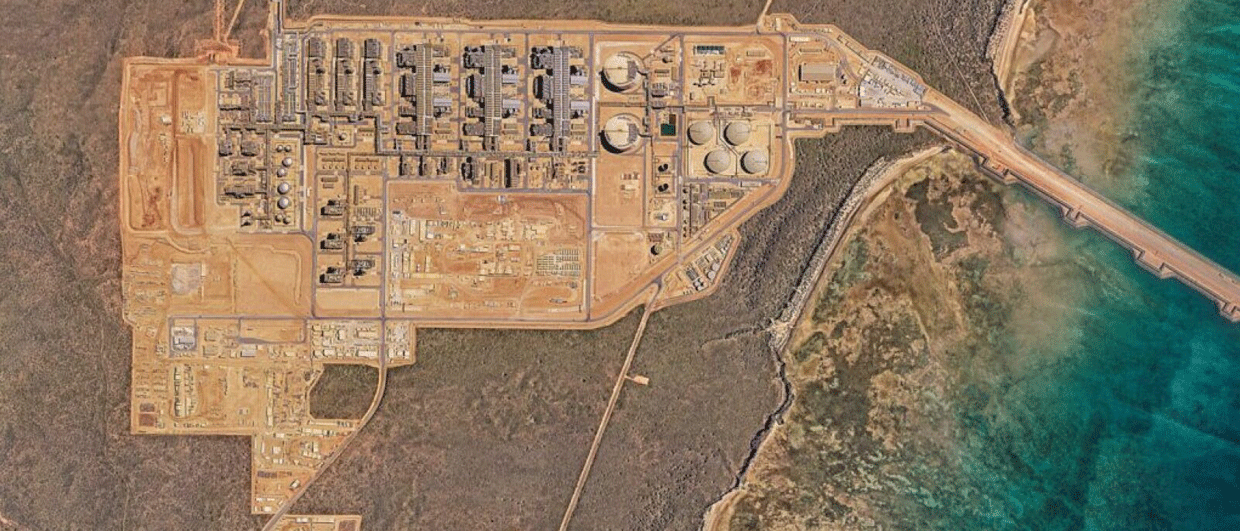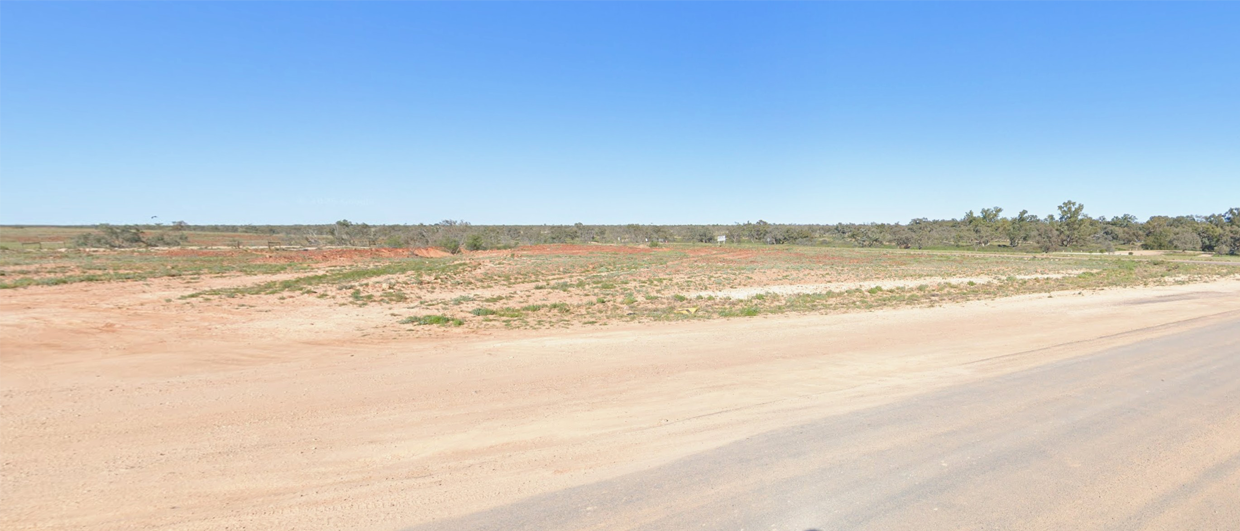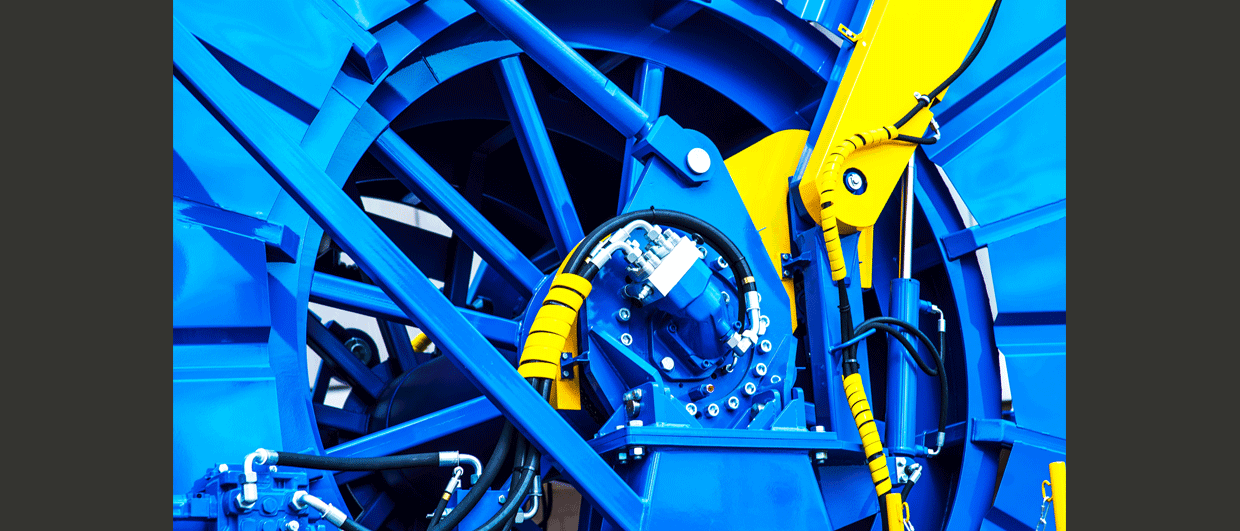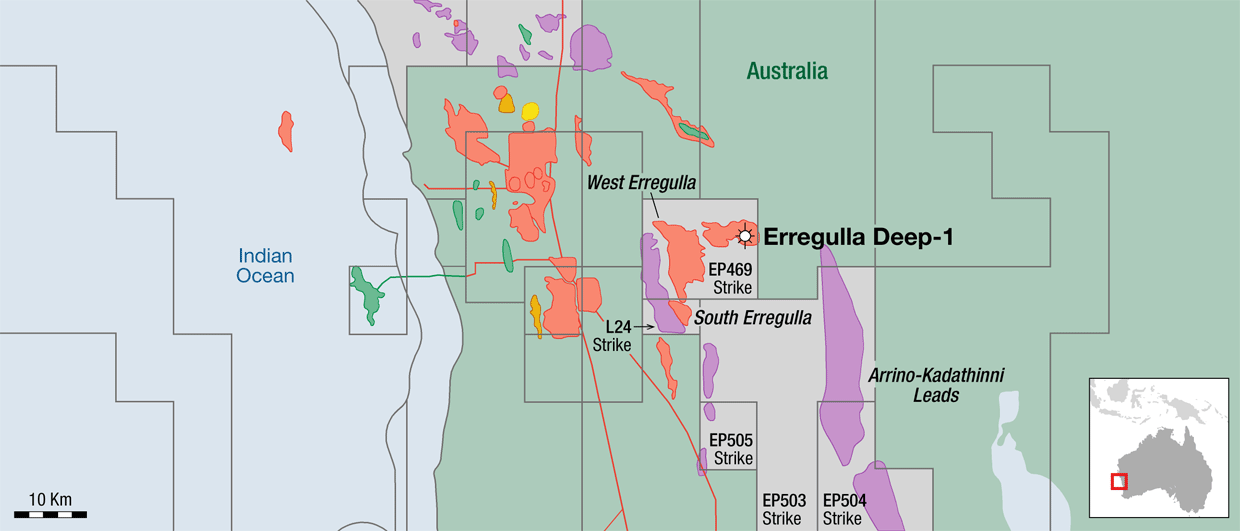“From when I was in primary school, I wanted to become a geologist”, says Amanda Barlow when I speak to her whilst she sits in her kitchen on the Gold Coast, south of Brisbane, Australia. “Where my fascination comes from? I don’t really know, but my mother’s father was a bit of a fossicker – a person who is good at searching for minerals. He worked in the mines in his early career and built up a small rock collection. He gave it to me when I was young, which must have triggered something! I became the proud owner of a geological hammer at the age of 10, which is also telling!”
And looking at rocks certainly became a thing throughout Amanda’s life. After graduating in 1983 from the School Of Mines Ballarat, about 100 km west of Melbourne, she has built up an impressive list of drilling projects she has been involved with, be it in gold and base metals mining, coal seam gas exploration or conventional oil and gas. And the list of projects continues to grow until today. “Flying in and flying out is a lifestyle that suits me”, she says. But it is not always easy….
Coping with downturns
In the concluding chapter of the book she wrote and published during the first years of the oil price crash that started in 2014, Amanda wrote: “With every rig that got “cold stacked” there were hundreds of workers being made redundant. It wasn’t dependent on your experience or your position – it just came down to where you were when the music stopped.”
She wrote this in 2016, when she came off her last contracting job for Woodside in the Carnarvon Basin, Western Australia. The wells she helped drill were commitment wells for the licence, but there was no new work in sight. For that reason, she concluded the book by saying: “I don’t know how long it would be before I’d be back on a rig but hopefully not too long. Now it’s my turn to play the waiting game.”
Amanda’s waiting game was a tough one. “I had to sell the property I invested in just before the downturn kicked in, to the point where I only had a car left! Then, someone told me to become an Uber driver, which I had not thought of at all. And it worked very well; I spent about 9 months driving people around and managed to pay my essential bills that way. It is easy to complain about the disruptive nature of a service like Uber, but believe me it is keeping a lot of people out of poverty”, Amanda reiterates.
At the end of the day, the waiting game worked out for Amanda though. “One never knows when good times return, but the fact that I’m getting calls
from recruiters again is something that I haven’t seen for a long time. It is a good feeling for sure, much better than continuously having to chase recruiters to get back to me.”
And you also don’t know whether to submit your CV to multiple agencies for the same job. There seem to be no rules anymore…
The return of the good times does not mean that the pendulum is back where it was at a similar moment during the previous upturn. “The way wellsite geologists are recruited has changed”, says Amanda. “All contracts are handled through recruitment agencies, which have multiplied exponentially in the past 10 years. It’s increasingly harder to get a job if you don’t have prior experience with the companies or have a track record with the recruiting agencies. It’s impossible to know how the O&G companies will recruit wellsite geologists for their campaigns…whether they will select individuals on their experience or just go for the cheapest tender.”
“During the downturn, this was especially difficult because some companies were just going with the recruitment agency that submitted the cheapest tender, but you don’t know what agencies are going to be bidding for the job. And you also don’t know whether to submit your CV to multiple agencies for the same job. There seem to be no rules anymore.”
Fighting the old boys network has always been my biggest challenge
“On top of that, this industry has a historical male-dominated generational workforce due to women not being encouraged to work in the industry until
recent decades. There’s a network of career wellsite geologists in Australia who have worked with each other throughout 40 years or more of working in the oil and gas industry, who have the deep experience and connections to get prioritised for jobs when they become available”, says Amanda. “I had to break into that network after working in mineral exploration for 20 years first.”
Working in oil and gas was a midlife career change for Amanda when she was in her 40’s. Perseverance, networking and staying relevant has paid off. Now the oil and gas industry is on the cusp of another bull market, and possible supercycle, due to the lack of capital !owing into the industry during the previous decade, and opportunities are again presenting themselves, especially for people who have already had some skin in the game. As the critical skills shortage kicks in, the tables have finally turned in favour of the geologists and the recruiter’s calls are finally coming in again!
“The tool must be broken”
Amanda has mostly been drilling appraisal and development wells throughout her career. With offset well data always available in these cases, there is limited scope to see something genuinely unexpected in terms of geology. However, her stint in Myanmar, drilling in the deep-water area of the Rakhine Basin at more than 2,000 m, brought an experience that stuck with her since. And it is related to the unique geological setting of the place.
“The deep-water area of the Rakhine Basin is characterised by the presence of large-scale gravity slides and extensive debris flows of Mass Transport Deposits (MTD), which had been interpreted as a result of two interacting depositional systems: the Brahmaputra Fan (part of the Bengal Fan) inputting sediment from the north, especially during the Miocene; and the uplifted Rakhine margin inputting sediment from the east during the Upper Pliocene–Pleistocene”, Amanda explains.
“These debris flows can cause major seismic problems when attempting to image the geology below them because they can absorb a large proportion of the high-frequency seismic energy. They clearly stood out on the seismic data we were working with”, she continues.
It was only when it happened a second time, and people in town questioned the reliability of the data collected, that I remembered having the same concerns on a previous well.
“There was also an interesting effect in the resistivity data that was collected in these wells, with intervals where all 4 resistivity curves showing a dead straight line and all on top of each other. On a number of occasions, the operations geologist and petrophysicists in town complained that there was something wrong with the LWD tools as the resistivity curves looked erroneously too straight and all channels were giving near identical readings”, says Amanda. “When looking very closely though, one could already see that the curves showed minor differences, clearly suggesting that the tools did work.”
“It was only when it happened a second time, and people in town questioned the reliability of the data collected, that I remembered having the same
concerns on a previous well, and when I reviewed the previous data, it turned out to be collected over a zone of MTD material. I think it is the highly compacted nature of the MTDs that caused the resistivity curves to be overlapping that much; there is simply no porosity or permeability in these systems, so no invasion of any drilling fluids either. I have seen a lot of geology, but a sedimentary succession being so tight as these MTDs is something that I have never encountered somewhere else”, Amanda concludes.
A Korea photo moment
In her book, Amanda describes the moment she comes onshore and hears the news about the share price hike a company had just experienced as a result of the well she contributed to drilling safely. “It is a great feeling to be part of such a success story”, she says.
It does not always work like that though. In Korea, Amanda worked on a well in the Ulleung Basin. The Koreans were very keen to develop a domestic production base, so they were following operations very closely. “At first, there were good indications from the wireline logging that we had encountered
good reservoirs”, Amanda explains. “This caused rumours that a photographer was coming out to the rig to take photos of the moment a new gas discovery could be confirmed.”
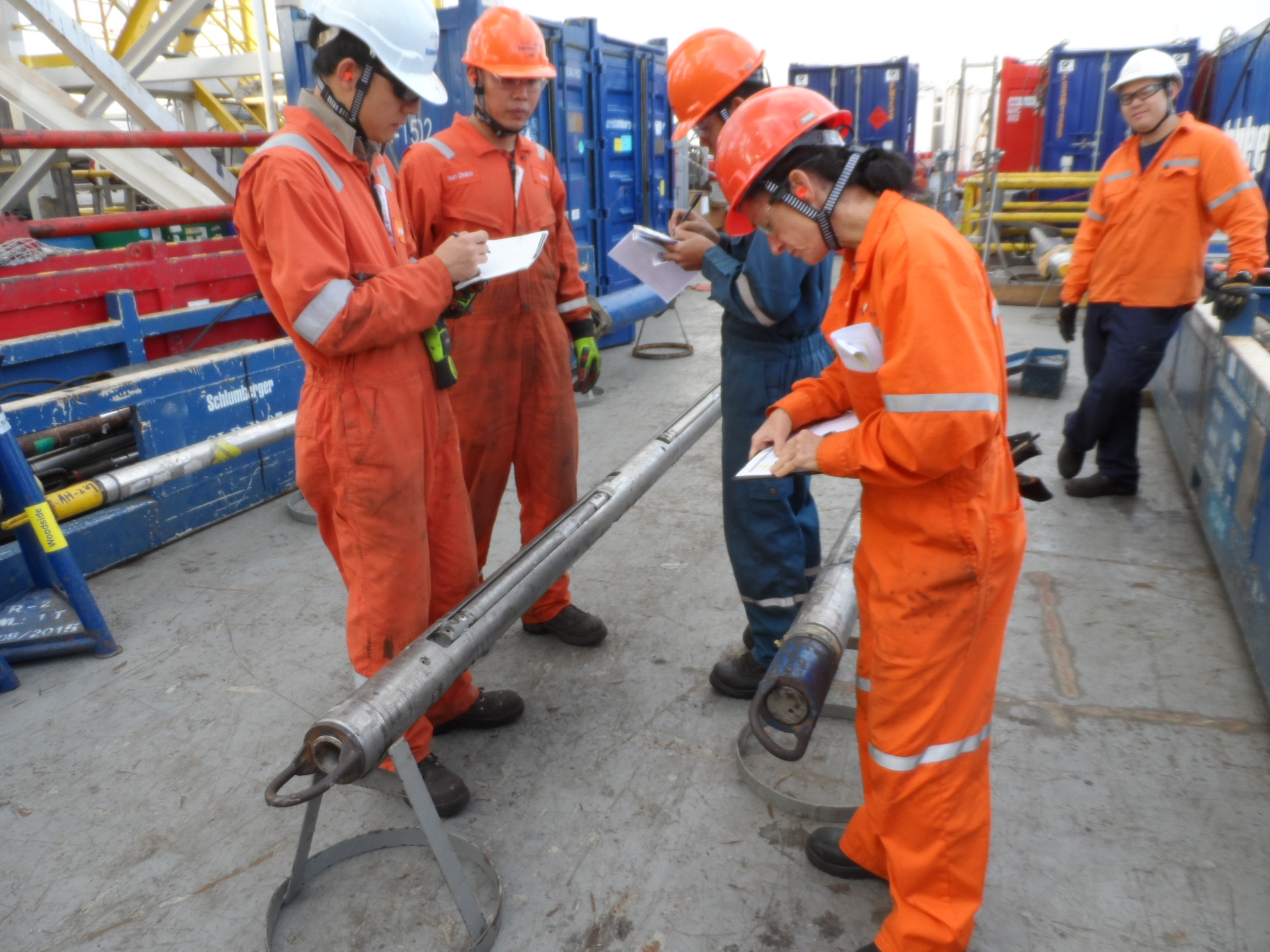
“We had taken downhole gas samples, which were analysed on the rig straight away. With everyone waiting in anticipation, ready to transfer the news
back to shore, the first analysis came in. Only CO2. I’ll never forget this, also because I needed to rush up 10 flights of stairs to collect the jars one by one
on the deck, and phone my boss from the wireline logging unit that was level with the drill floor.”
“And whilst we were doing all this, we noticed a couple of fighter jets circling above the rig, coming lower and lower. At first, we thought it was really cool, but as the planes got closer, everyone suddenly stared at each other and thought – should we feel worried about this? Combined with the fact that we knew submarines were continuously observing us as well as navy vessels, it makes you acutely aware of the sensitivities at play in that part of the world.”
How technology has changed life on rigs
With all the talk about technology going to replace the human workforce, it is interesting to see that Amanda’s observations from being offshore paint a picture that one would not necessarily expect. “Rather than seeing fewer people on rigs these days, there are more!”, Amanda says.
“Advances in technology have meant that an incredible amount of data is now collected in every well that’s drilled. AI will most certainly be able to make more reliable interpretations as more and more data is fed into models over time. I don’t imagine AI will replace jobs in the industry though, just
enhance the results that earth scientists can produce by the extra compute that AI will enable.”
“As far as upstream oil and gas professionals go, I can’t see a time where people on the rigs will ever be replaced by AI because the data needs to be collected in the first place. The systems on the rigs will certainly become more technically advanced but the job of collecting the data will still require humans…at least in my lifetime!”
“A telling sign of this is the fact that every generation of MODUs (mobile offshore drilling units) becomes bigger and more technical than its predecessor. And this also goes for the POB(persons on board) limits… bigger rigs which require more technical specialists to operate the complex systems on them. While downstream operations may suffer a thinning out of the workforce, the upstream operations have seen anything but this happening.
The data collection step is the most fundamental building block that AI needs to work with. It will always be the case that “boots on the ground” remain an essential part of the resources industry.”
“For instance”, continues Amanda, “if a well uses Managed Pressure Drilling technology, it comes with a whole crew in itself. The same applies to mud
recovery systems for the top hole section before a marine riser is run. It’s not like the drill crew will all of a sudden start doing that stuff too. Reflecting on that, when I started working on rigs, they had only 100-120 people on board; nowadays it is common to have 180 or more, with drill ships going above 200 easily. In that sense, it looks like new technologies are not so much replacing existing ones, but rather adding to what was already there.”
The future of the wellsite geology profession
“Wellsite geology is a very difficult role to get a start in”, says Amanda. “It’s generally a job that oil companies hire contractors for because of the non-consistent and unpredictable work involved. With the oil and gas industry being so cyclical, and now with the added uncertainty of ESG mandates
trying to slow down production of hydrocarbons, I would only recommend a career as a wellsite geologist to those who could weather the storm of unpredictability.”
Maybe the above is a reason why there does not seem to be a new generation of wellsite geologists waiting to get started. But there is another reason
too. “As there is no real degree for well site geologists, the most common springboard to become one is to be a mudlogger for a while. And with mudlogger positions being by far the lowest paid position on the rig, it may not be difficult to imagine that people don’t warm up to fulfill these roles, especially by Australians who can get much better-paid jobs elsewhere.”
“Consequently, you see less and less Australians filling mudlogging roles as the skills shortage kicks in with the current bullishness of the minerals
and oil and gas industries. Entry level mining jobs are far more attractive to geology graduates than mudlogging jobs. The mudlogging positions are
generally filled by a foreign workforce of geologists who have not had the good fortune to have access to opportunities outside of the oil and gas industry, like Australian geology graduates generally do.”
“And for those doing the mudlogging jobs for the bigger oilfield service companies, I see that nowadays most are trained up to become data engineers
rather than wellsite geologists”, says Amanda. “There’s not a very clear career pathway to get to the wellsite geologist position without committing to
a lifetime of working away from home.
It’s not an entry-level job so gaining years of experience in the field is necessary to acquire the skills and competencies required. For mudloggers and data engineers who are working in a salary position with a third party operator, and have a reasonably reliable work structure, it’s hard to make the leap to the very unpredictable job of an independent contract wellsite geologist.”
Life is good
Despite the unpredictability in terms of work, Amanda reiterates that she is very happy. She lives on her own, but her ex-husband is still her best pal
and their three healthy, grownup, and independent children are scattered around the country. It leaves her ample time to focus on her major hobby –
running marathons around the world. By the time this article goes to print, Amanda will have finished her 78th marathon and 79th, both in the US. “I’ll certainly get to number 100 in the next few years!”


